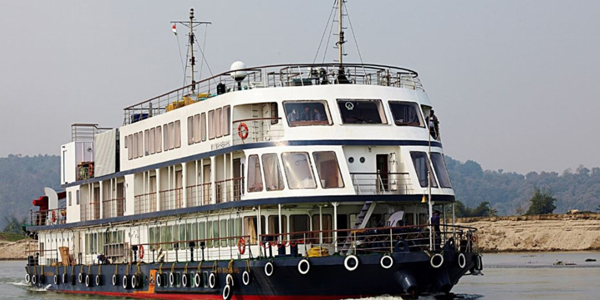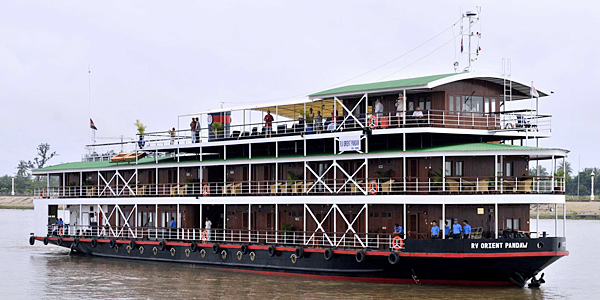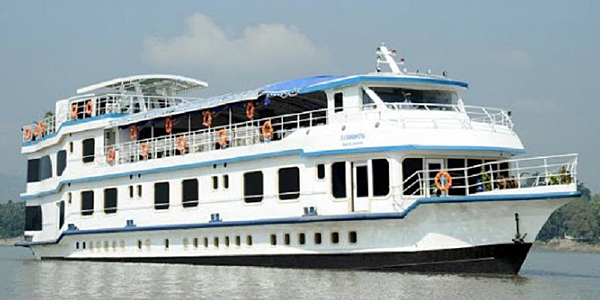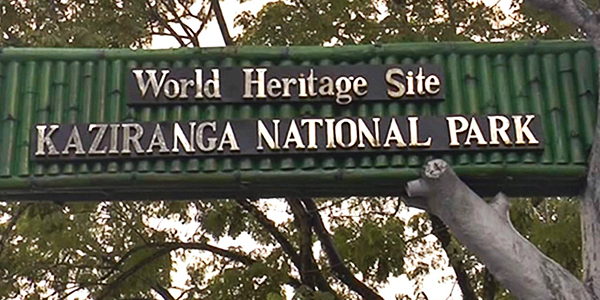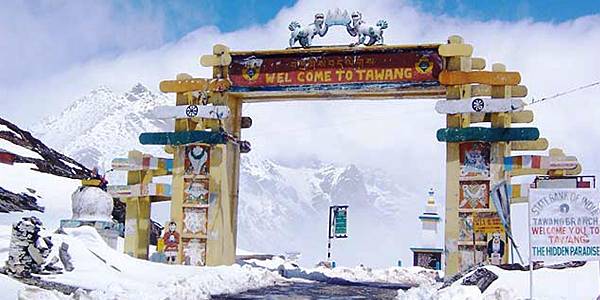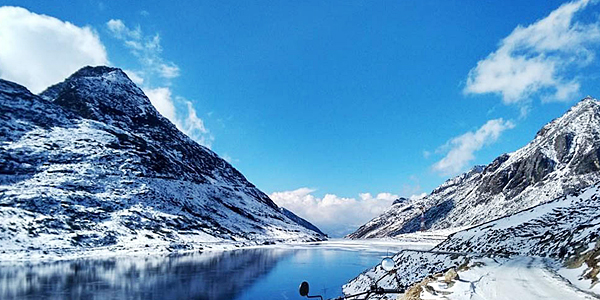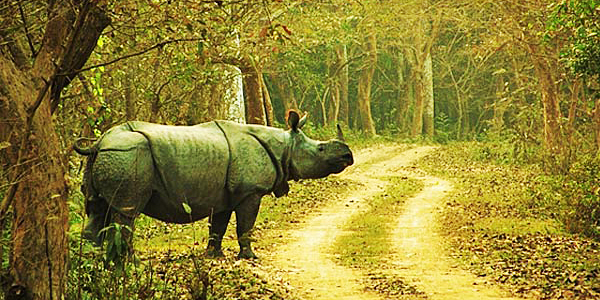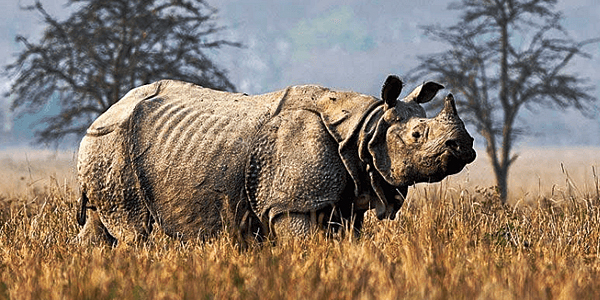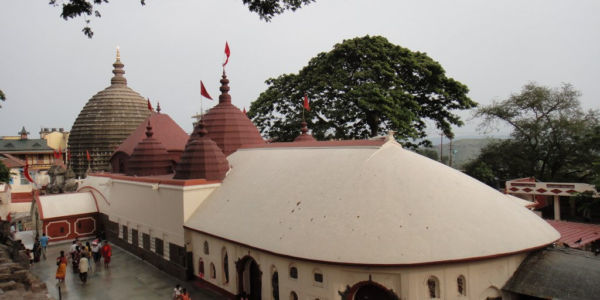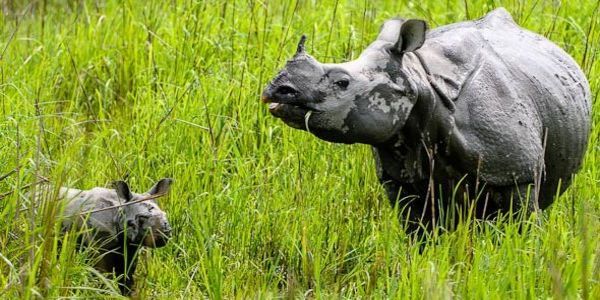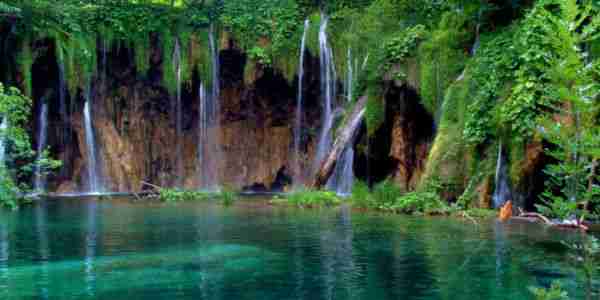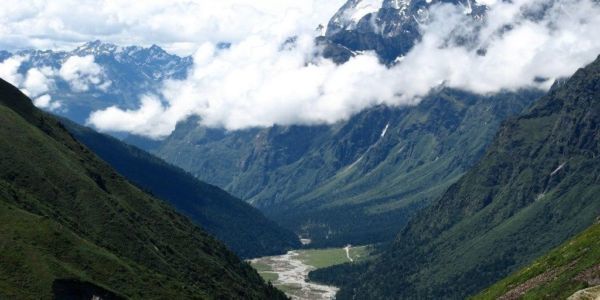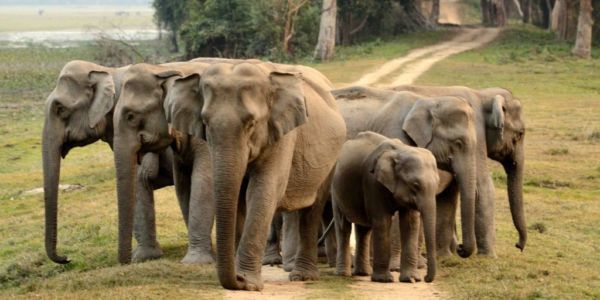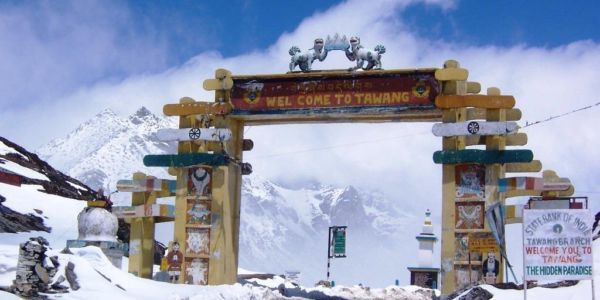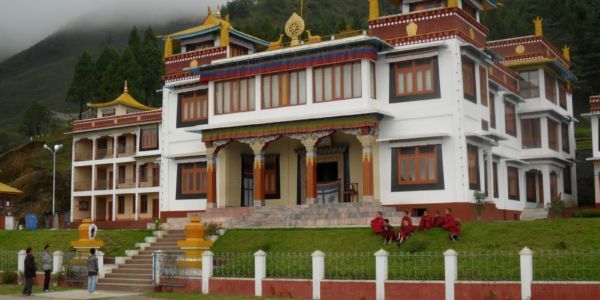Assam

Assam at a glance
Ancient Assam was known as Pragjyotisha in early times and as Kamarupa in later times. The name Pragjyotisha stood for both the kingdom and capital city. The earliest mention of the city of Pragjyotisha is found in the Ramayana and Mahabharata. According to the Ramayana, this city was founded by Amurtaraja son of Kusa and grandfather of the famous stage Viswamitra. There are different options regarding the origin of the name''Pragjyotisha''. According to the Kalika Purana,''here Brahma first created the stars and hence the city is called Pragjyoitishpur,a city equal to the city of Indra.''13Gait says that the name, Pragjyotishpur ''is interesting in connection with the reputation in which, the country has always been held as a land of magic and incantation, and with the view that it was in Assam that the Tantrik from of Hinduisim orginated.''14The name Pragjyotisha, however, is most probably derived from the term Prag-jyotish, meaning the eastern light. Hence it appears to mean ''the city or land of eastern light.''15 The kingdom came to be known as Kamrupa during the Purantic times,based on the legend that Kamadeva, the god of love, the Indian Cupid, who was destroyed by the fiery glance of Siva returned to life in this country,16According to B.K. Kakati, the name ''Kamrupa'' is derived from an Austric formation like Kamru or Kamrut, the name of a lesser divinity in Santali, which justifies the association of the land with magic and necromancy.17 All this can be explained in the light of the cult of magic and sorcery prevalent in the land. The first historic reference to the kingdom of Kamarupa is made in the Allahabad Pillar Inscription of Samudragupta, assigned to the middle of the fourth century A.D. The state is rich in water resources and has vast tracts of fertile land. Assam is also the third-largest producer of petroleum and natural gas in the country and has ample reserves of limestone. With its five national parks and 15 wildlife sanctuaries, the state is a biodiversity hotspot. Other potential areas of investment include power and energy, mineral-based industries, tourism and crude oil refining.
| Area | 78,550 sq km |
|---|---|
| Capital | 3,11,69,272 |
| Population | 3,11,69,272 |
| Official Languages | Assamese, Karbi, Bodo, Bengali. |
| Boundary | Assam is bordered in the North and East by the Kingdom of Bhutan and Arunachal Pradesh. Along the south lies Nagaland, Manipur and Mizoram. Meghalaya lies to her South-West, Bengal and Bangladesh to her West. |
-
Bihu

Bihu Is The Most Important And Widely Acknowledged Festival In Assam And Is Celebrated With Joy And Abundance By Everyone Irrespective Of Caste, Creed, Religion, Faith Or Belief. There Are Three Bihus, Each One Marking A Distinct Phase Of The Annual Rice-farming Calendar And They Are Held At Three Different Times Of The Year. The Bihus, Bohag Bihu, Kati Bihu And Magh Bihu, Are Named According To The Months Of The Assamese Calendar. Bohag Or Rongali Bihu, The Most Important, Is Celebrated In The Middle Of April. It Marks The Assamese New Year And Coincides With The Advent Of Spring And Seeding Time. Rongali In The Assamese Language Means Colourful So, As The Name Suggests, This Is The Most Colourful And Vibrant Of The Three Bihus And Can Continue For Several Days. Kati Or Kongali Bihu, The Quietest, Is Observed Rather Than Celebrated In Mid-october. It Is Held Just Before The Rice Is Harvested And Involves Silent Prayer In The Form Of Lighting Earthern Lamps In The Paddy Fields To Ensure The Success Of The Crop. The Assamese Word Kongali Means Scarcity Or Deprivation And The Mood Of This Bihu Is Very Sober With None Of The Usual Dancing And Singing. Magh Or Bhogali Bihu Is Celebrated In The Middle Of January Immediately After Harvesting The Rice Crop With Village Feasts (bhogali Means Feasting In Assamese). At Bohag Bihu (which Also Marks The Assamese New Year) And Magh Bihu (the Harvest Festival) Young Women Dressed In Colourful Traditional Festive Costumes Woven Out Of Pure Muga (silk) Dance And Are Accompanied With Wild And Lusty Beats From The Men Dressed In Dhoti (baggy White Pants) With Gamuchas (traditional Scarves) Tied Round Their Foreheads Playing The Dhol And Pepa. The Dhol Is An Essential Part Of Bihu. It Maintains The Rhythm And Is Similar To An Indian Drum, Played With Two Sticks And Made Out Of A Wooden Barrel. The Two Open Ends Are Covered With Animal Skin. Tightening Or Loosening The Skin With Ropes Or Nuts And Bolts Adjusts The Pitch. The Dhol Dates Back To The 15th Century When It Was Played During Wartime. The Pepa, A Chunky Flute-like Instrument, Is Also Played During Bihu. It Is Made From Buffalo Horn With A Short Tapering Stem Of Bamboo, Cane Or Reed As The Mouthpiece. The Songs Are Mostly Based On The Theme Of Love And Often Carry Erotic Overtones. Bihu Dances Are Extremely Energetic And Feature Both Young Boys And Young Girls, Although They Tend To Stay In Their Separate Groups. The Dances Are Charactised By Brisk Steps, Stylish Footwork, The Flinging And Waving Of Hands And The Erotic Swaying Of Hips To Represent Youthful Passion. The First Phase Of Bohag Bihu Is Dedicated To Cattle. They Are Smeared With Mustard Oil And Then Taken To The Nearest Pond Or River For A Ceremonial Bath. The People, Too, Take A Bath In The River. The First Part Of The Dance Consists Of Husari Kirtans (religious Songs). One Man Sets The Refrain, Which Is Soon Picked Up By The Rest And Young Men Only Perform The Dance In A Circle. Both Young Men And Women Take Place In All The Other Bihu Dances Where The Songs Are Often Love Ditties Which Are Sung In Couplets And Often Performed In The Fields And Under Trees. Both Men And Women Play Clappers Called Taka And The Dancers Form Circles, Rows And Figures Of Eight (representing The Motif Of Intertwined Serpents). During The Second Phase Of Bohag Bihu Villagers Don New Clothes, Exchange Gifts And Visit Relatives And Friends In Groups And Perform Bihu Dances In The Open. Magh Bihu Also Brings Much Revelry And Merry-making. Bonfires Are Built High And After The Chanting Of Prayers And Much Singing And Dancing They Are Set On Fire. The Dances Are Similar To The Ones Performed At Bohag Bihu But More Vigorous. The Women Folk Make Different Varieties Of Delicacies Or Bihu Pithas (flaky Rice Powder Pancake Rolls) Like Til Pitha Which Is Stuffed With Sesame Seeds Fried With Molasses. In The Paddy Fields During The Day The Men Build Megis (large Bonfires) And Bihu Ghors (temporary House-like Structures Made From Bamboo And Thatch) And In The Evening They Feast And There Is Much Singing And Dancing. Next Morning They Bathe Early, Chant Prayers And Set The Bihu Ghor Alight As They Celebrate With More Singing And Dancing. They Then Take Pieces Of Burnt Wood To The Fields As Auspicious Offerings. People Will Also Visit Their Relatives And Friends At This Time And Games Are Sometimes Organised Like Bull Fighting, Javelin And Sword Fights. Being A Harvest Festival, Magh Bihu Is Celebrated Almost Everywhere In India And Is Known As Sankranti.
-
Me-Dum-Me-Phi

The Most Important Ahom Festival Which Deserves Mention Is The Me-dum-me-phi, I.e., The Ancestor Worship Festival Which Is Observed By The Whole Ahom Community. This Is Performed Annually On The 31st Of January And Helps To Develop Social Contacts And Community Feelings Among The Ahoms. Colourful Processions With Devotees In Traditional Finery Are Also Taken Out On The Occasion.
-
Baishagu

The Bodos, A Branch Of The Indo-mongoloid Family, Are The Largest Scheduled Tribe In Assam. They Migrated South From Tibet And Burma And Were One Of The First To Settle In Assam. They Generally Celebrate Baishagu, Famous For Its Myriad Colours And Merriment, In Mid-april. It Is The Most Cherished Festival Of The Bodo Tribe And Is Also Celebrated As A Springtime Festival To Commemorate The Advent Of The New Year. On The First Day The Cow Is Worshipped And On The Following Day Young People Of Each Household Reverentially Bow Down To Their Parents And Elders. Finally They Worship The Supreme Deity Bathou Or Lord Shiva By Offering Chicken And Zou (rice Beer). The Bagarumba Dance Is Typically Performed During This Festival And It Is The Most Attractive Dance Of The Bodo Community. Girls Alone, Dressed In Dokhnas (draped Skirts) Chaddar (cloth Used As A Bodice) And Jhumra (shawls), Perform This Dance (also Known As Bardwisikhla) Accompanied By Men Playing Traditional Musical Instruments Like The Serja (a Bowed Instrument), Sifung (flute), Tharkha (a Piece Of Split Bamboo) And Khum (a Long Drum Made Of Wood And Goatskin), As They Utter "bagurumba Hay Bagurumba". Although It Is Cheerful And Creates A Festive Mood Of Much Gaiety And Merriment Providing The Girls With Relief From Their Normal Hardworking Village Life, It Is Also Serious, And The Lyrics That Accompany It Are A Simple Description Of The World Of Nature. The Purpose Of The Dance Is To Appease The Bodos' Supreme God Bathow, For Whom The Sizu Tree Is A Symbol. It Is Also Called The Butterfly Dance As The Girls Look Like Pretty, Flighty Butterflies As They Dance With Their Arms Outstretched, Their Shawls Creating The Impression Of Wings. The Baishagu Festival Is Closed With Community Prayers Offered At The Garja Sali, A Place Of Common Worship, Located Outside The Village In The Corner Of A Grazing Field.
-
Ambabuchi Mela

Is The Most Important Festival Of Kamakhya Temple Of Guwahati And Is Held Every Year During Monsoon (mid-june). It Is A Ritual Of Austerities Celebrated With 'tantric Rites'. During Ambubashi The Doors Of The Temple Remain Closed For Three Days. It Is Believed That The Earth Becomes Impure For Three Days. During This Time No Farming Work Is Undertaken. Ambubachi Mela Is Held At The Kamakhya Temple, After Being Closed For The Afore-mentioned Three Days. On The Fourth Day Only The Devotees Are Allowed To Enter Inside The Temple For Worship. Thousands Of Devotees From All Over The Country And Abroad Visit This Mela.
-
Kherai

The Kherai Is Another Bodo Festival And Is Associated With Worshipping Bathow (lord Shiva) The Principal God Of This Particular Tribe. The Kherai Puja (act Of Worship) Is Always Followed By A Series Of Ritual Dances Called The Deodhani. Thepuja And Dance Are Inseparable, The Dance Being An Essential Part Of The Kherai Worship. The Term Deodhani Is Derived From The Sanskrit Word Deva Meaning God Or Deity And Dhani Meaning Sound Or Echo. Hence The Word "deodhani" Literally Means The Sound Or Utterings Of A God Or Deity Although Some People Believe Dhani Has The Meaning Woman. Traditionally A Young Girl, A Female Shaman Or Oracle, Is Selected To Play The Key Role. She Must Have Reached Adulthood, Be A Virgin, And Possess A Shapely Form With A Slender Waist. The Priest First Consecrates This Dancer At The Altar Of Bathow After Which She Leads The Deodhani Dance. The Dance Is Performed Only By Women But Is Accompanied By Two Men Playing The Khum (drum), Two Men Playing Thesifung (flute) And Two Men Playing Jotha (cymbals). The Dancers, With Their Hair Free, Wear Long Woven Dresses, Often Red In Colour, Black Girdles, And A Yellow Or Red Gamocha Around Their Waists. Historically, At The Time Of Dancing The Main Dancer Was Naked Above The Waist Other Than Her Jewellery Of Nose Rings, Earrings, Necklaces And Bracelets, Used To Carry A Small Drum As A Talisman, Had A Vermillion Mark On Her Forehead And Her Hair Dressed In A Heart-shaped Plait. Three Stages Mark The Puja The Main Dancer Performs. Firstly, With The Help Of The Oja (priest) Who Is Responsible For Ensuring That All The Sanctities And Rituals Are Performed Correctly, She Falls Into A Trance And He Consecrates Her Before The Altar Of The Bathow. She Then Begins To Dance With The Intention Of Appeasing And Seeking Favour From Nineteen Gods And Goddesses Beginning With Bathow (lord Siva) And Ending With Lakshmi. At One Stage She Dances A Fierce War-dance At Which Time She Takes Up A Sword And A Shield. Her Movements Reflect The Different Deities To Which Her Dance Is Dedicated And The Beat Of The Accompanying Instruments Also Changes Accordingly. The Third Stage Is At The End Of The Dance When She Predicts Fortunes And Answers Questions Addressed To Her By The Attending Villagers.
-
Deodhani

A Two Or Three Day Deodhani Festival Is Also Celebrated Every Year In The Middle Of August When Thousands Of Brightly Dressed Devotees, Encircled With Brilliant Fresh Flower Necklaces And Adorned With Vermillion Die, Flock To Guwahati And Make Trance Offerings To The Serpent Goddess (manasa Puja) At The Kamakhya Temple There. The Dance Begins In The Evening And Continues Until Dawn As The Devotees Express The Sacrifice Of Their Lives To The Holy Goddess. As They Dance They Flourish Live Pigeons And Goats Which Are Later Sacrificed In The Temple.
-
Jhumur

The Jhumur Is One Of The Traditional Folk Dances Of Assam. It Was Developed Over The Years By The Tribes Living And Working In The Tea Gardens, Called Kulls. It Is Performed By Girls And Boys Together Or Sometimes By The Girls Alone And Is Traditionally Performed In The Autumn To The Beat Of A Madal (drum). The Jhumur Is A Celebration Of Youth And Vigour And Both The Young And Old Dance Together In Gay Abandon. It Requires Precision Footwork While The Dancers Clasp Tightly To Each Other's Waist. The Female Dancers Wear Red Saris, Red Blouses And Jewellery Of Bangles And Anklets.
-
Heritage & Culture
 Assam - The Very Mention Of This Word Brings To One's Mind The Delightful Blend Of Culture, Heritage, Faiths And Beliefs Of The Innumerous Ethnic Tribes And Sub-tribes Residing In This Region. The Culture And Tradition Of The State, Its Music, Dance And Literature Are All Interwoven Into The Social Fabric And Cross All Barriers Of Caste, Creed And Religion. In Fact, A Mention Of The Rich Tradition Of The State, Without Referring To The Diverse Lifestyle, Arts-crafts, Fairs And Festival Of The People Residing Therein, Would Be As Good As Incomplete. Assam Has The Largest Number Of Tribes Or Races In The Whole Of India. The Main Communities Of The Region Include The Aryans And The Non-aryans I.e. Mongoloids And Indo-iranians. Apart From That, Bodos (or Kachari), Karbi, Kosh-rajbanshi, Miri, Mishimi And Rabha Are The Other Tribes That Hav
Assam - The Very Mention Of This Word Brings To One's Mind The Delightful Blend Of Culture, Heritage, Faiths And Beliefs Of The Innumerous Ethnic Tribes And Sub-tribes Residing In This Region. The Culture And Tradition Of The State, Its Music, Dance And Literature Are All Interwoven Into The Social Fabric And Cross All Barriers Of Caste, Creed And Religion. In Fact, A Mention Of The Rich Tradition Of The State, Without Referring To The Diverse Lifestyle, Arts-crafts, Fairs And Festival Of The People Residing Therein, Would Be As Good As Incomplete. Assam Has The Largest Number Of Tribes Or Races In The Whole Of India. The Main Communities Of The Region Include The Aryans And The Non-aryans I.e. Mongoloids And Indo-iranians. Apart From That, Bodos (or Kachari), Karbi, Kosh-rajbanshi, Miri, Mishimi And Rabha Are The Other Tribes That Hav
-
Cuisine

Cuisine Of Assam Is Probably The Most Different Type Of Cuisine You Would Have Ever Tasted. You Cannot Say That Cuisine Of Assam Has Not At All Been Influenced By External Factors. New Dishes Have Become Famous And The Traditional Dishes Have Undergone A Slight Variation, But The Change Is Ever So Slight. The Delicacies Still Have The Same Aroma And Taste That Made The Assam Cuisine A Household Name In India. The Cuisine Is Distinguished By On The Basis Of The Exotic Herbs And Vegetables Added To The Dishes That Lend A Magnificent Taste To The Dishes. Rice Is The Main Dish And Finds A Place In The Ingredient List Of Almost All Preparations. In Non Veg, Fish Curries And Pork Dishes Are The Favorite Most Of Assamese People. Birds Like Ducks And Pigeon Are Also Used In Dishes.
In Assam, A Traditional Full Course Meal Starts With Serving Khar Which Is A Class Of Dishes And Ends With A Tenga Which Is A Sour Dish. Just Like Food Is Served In A Banana Leaf Traditionally In South India, A Meal In Assam Is Served On A Bell Metal Utensils. Almost Everyone Ends Their Meal By Chewing On A Betel Nut Known As Paan.
Cane and Bamboo

Metal Crafts

Handlooms

Toys

Pottery

Woodcraft

Masks

Jewellery

Terracotta

Traditional Paintings




